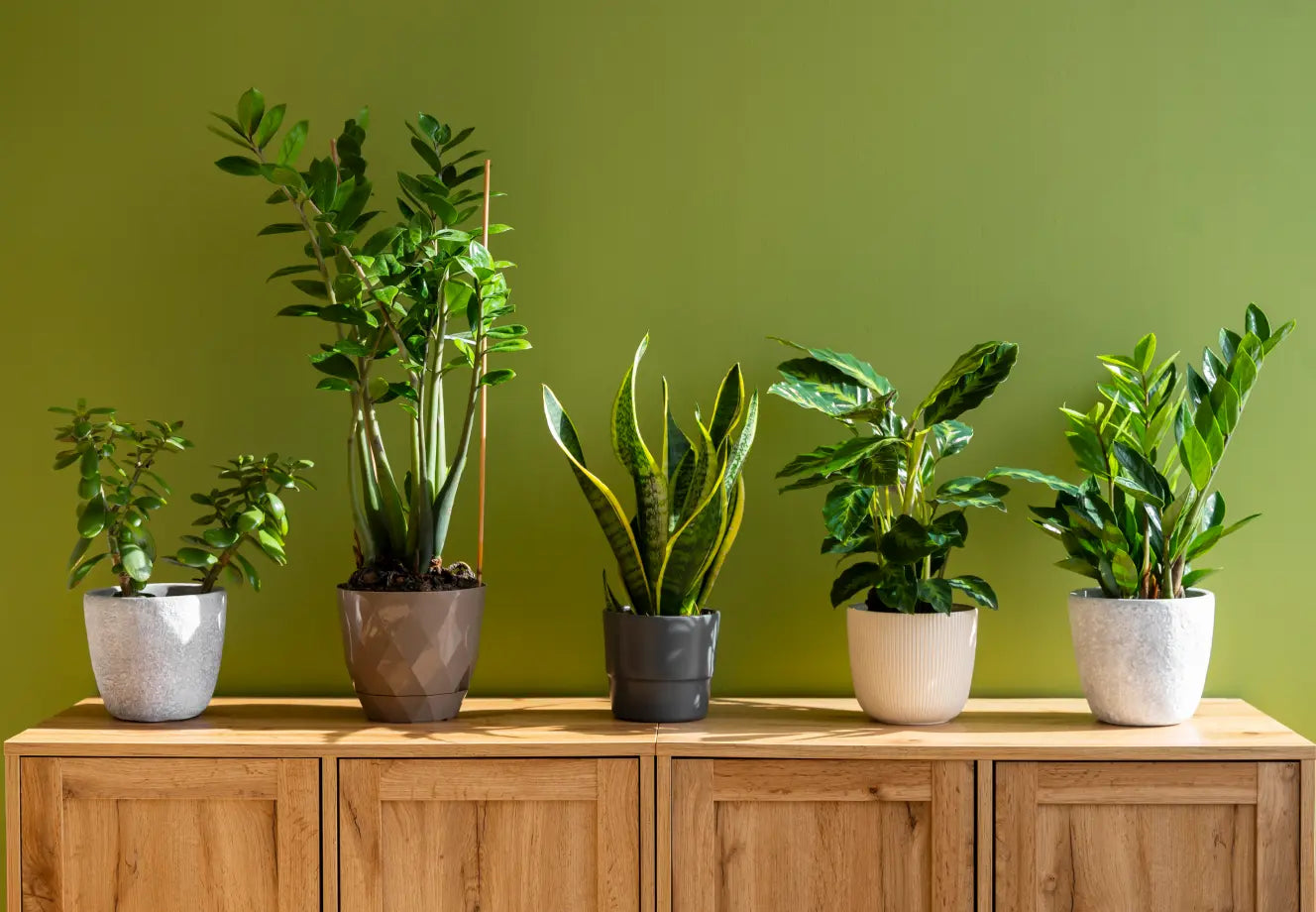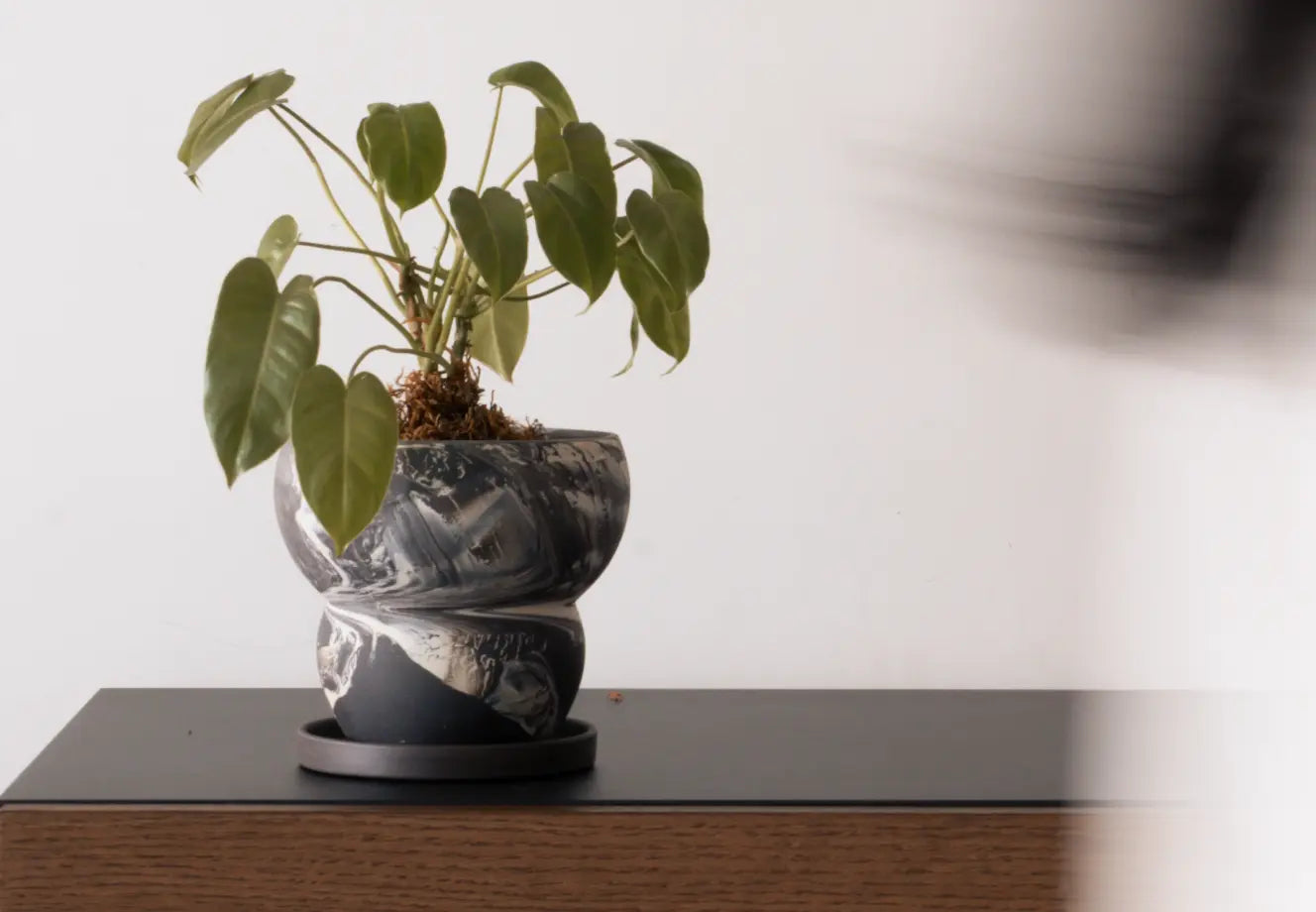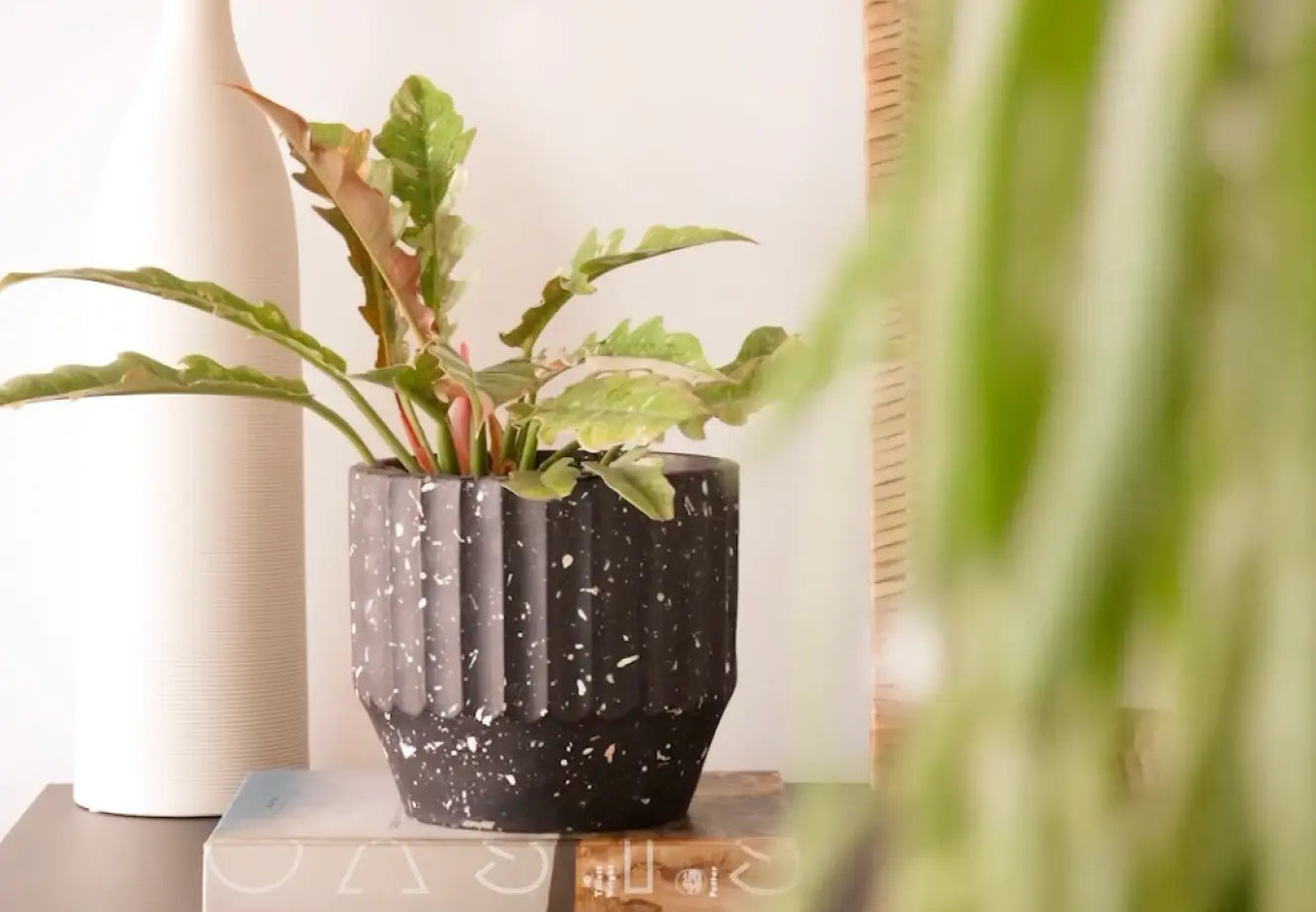When the world paused in 2020, many of us turned to home gardening. If you're just starting out with houseplants, you’re not alone. But caring for indoor plants can feel tricky at first. Which ones are beginner-friendly? How much light do they need? What kind of soil works best?
This blog is here to help. I’m sharing five of the best indoor plants for beginners—plants that are low-maintenance, beautiful, and perfect for Indian homes, especially in tropical or subtropical climates. You’ll get practical advice on light, soil, watering, and more, all in simple language based on personal experience.
I'll also suggest a few helpful tools, like grow lights or watering cans, to make care easier. And if you're looking for something stylish, Gharko offers planters that complement any space.
Whether you're bringing home your first plant or just trying to keep one alive, this guide will help you grow confidently and enjoy the process.
1. Philodendron Squamiferum

Philodendron Squamiferum is one of the easiest philodendrons to care for, and the best part? It can grow well even in medium light. If you're just getting started with houseplants, this one won’t disappoint.
Care:
Light Condition: We all know houseplants love bright, indirect light. If you give your plant a good amount of bright but filtered light, it’ll thrive beautifully. That said, some plants, like Philodendron Squamiferum, are quite tolerant. They can survive in medium to low light as well. While I don’t recommend keeping it in low light for long-term use, it can handle medium light just fine. Growth may slow down a bit, but your plant won’t die. Keep in mind, though, that light isn’t the only factor. If your plant isn’t doing well in medium light, it might be due to soil quality, watering habits, or lack of airflow. Always check those things too.
If you're planning to grow it completely indoors with limited sunlight, you might want to try our Blaze grow light. It makes a huge difference.
Soil: For most of my houseplants (about 70% of them), I use a similar kind of soil mix. It should be airy, well-draining, and rich in nutrients. My go-to mix includes premium potting soil (easily available on Amazon), vermicompost, perlite, succulent mix, dry sphagnum moss, orchid bark, and some red soil.
Watering: Most philodendrons, including this one, prefer to be watered when the soil is almost dry. You can check the top 2–3 inches using your finger or a wooden stick. If it feels wet, wait a bit longer. When the soil is dry to the touch, water it slowly until it drains from the bottom holes. If your plant is in a decorative pot without drainage, always remember to remove any excess water afterward.
Fertilizing: Feeding your plants is key to keeping them happy. I usually use seaweed extract or liquid fish fertilizer twice a month. If you're unsure about how much to use, start with a lower dose. Under-fertilizing is always safer than overdoing it. Always read the label and follow the instructions carefully. And if you’re ever confused, feel free to DM me on Instagram.
Humidity: Some philodendrons are tougher than they look, and Squamiferum is definitely one of them. That’s one reason I recommend it to beginners. It can comfortably grow in 30–50% humidity. I personally use a humidifier to maintain humidity indoors, but I also mist the leaves often. It keeps them shiny and helps remove dust.
Also Read- How To Choose a Grow Light for Your indoor Plants
2. Philodendron Burle Marx

Philodendron Burle Marx is actually one of my absolute favorites. If you ever get a chance to visit my home, you’ll instantly know why I love it so much.
Care:
Light Condition: If you’re already familiar with this plant, you’ve probably seen it thriving outdoors, by the roadside, in gardens, or just outside homes. That’s the beauty of Burle Marx. It’s incredibly adaptable. It can grow in direct sunlight as well as in low-light conditions. And let’s be real, when you're just starting, light is usually the biggest challenge. That’s why this plant is perfect for beginners. You can place it in almost any corner of your house. While growth will be slower in low light, the plant won’t die. You’ll still have a lush, green corner without the stress of constant care.
Soil: You can use the same soil mix recommended for Philodendron Squamiferum. Honestly, I use the same mix for about 70–80% of my houseplants, and it works beautifully every time.
Watering: Same care as Philodendron Squamiferum. Water only when the top 2–3 inches of soil are dry.
Fertilizing: Same as above. I use seaweed or liquid fish fertilizer twice a month in small amounts.
Humidity: Just like Squamiferum, Burle Marx handles 30–50% humidity well. It’s quite hardy and doesn’t need constant misting, but an occasional spritz never hurts.
Also Read- How to Grow Healthy Indoor Plants with Grow Lights
3. Ponytail Palm

Ponytail Palm is one of the most underrated houseplants out there. I genuinely find it outstanding, and once you see its long, hair-like leaves cascading down, you’ll understand why. It can easily create a beautiful green corner in your home.
I personally love this plant for many reasons: it’s super easy to care for, tolerates low light, looks stunning, and is very affordable. Mature plants can be a bit expensive, but I recommend starting with a smaller one to keep it beginner-friendly.
Care:
Light Condition: When I first brought home my Ponytail Palm, I had no idea about its light needs. But within a few weeks, I noticed it adapting well to low and medium light. While growth is slower in low light, it still thrives. The best part? You can also grow it in full sunlight if you prefer.
Soil: You can use the same soil mix mentioned earlier, or even regular garden soil works just fine. This plant doesn’t demand much and grows happily in a well-draining medium.
Watering: This is where Ponytail Palm becomes a true beginner's best friend. It stores water and nutrients in its thick, bulb-like stem, which means it can handle dry soil for long periods. I usually water mine just twice a month, and it has never complained. Just make sure to avoid overwatering. Let the soil dry out completely before watering again.
Pro tip: Use a narrow-spout watering can to control the flow. We have a perfect stainless steel watering can for this. Check it out!
Fertilizing: Fertilizing once a month is more than enough for Ponytail Palm. It’s a slow grower and doesn’t need frequent feeding.
Humidity: No special humidity needs here. It thrives in normal home conditions. You can completely ignore the humidity part, and it’ll still do great.
4. Dieffenbachia

Dieffenbachia is one of the easiest houseplants you can grow. You can place it in almost any corner of your home, and it’ll still do well. While low light might slow its growth, the plant won’t die, making it a great option for beginners. Plus, there are many beautiful varieties, and some of them have stunning leaf patterns that really stand out.
Care:
Light Condition: Dieffenbachias prefer bright to medium indirect light. That said, they can tolerate low light if needed, but don’t expect fast growth. If you can, try to give it at least a medium-light spot. It will thrive much better there.
Soil: This plant isn’t fussy about soil. You can use regular garden soil or go for a premium soil mix like the one used for the other plants mentioned above. Both options work well.
Watering: Water Dieffenbachia only when the soil feels completely dry. Overwatering is one of the most common reasons houseplants struggle. Remember, it’s better to under-water than to overdo it.
Fertilizing: Feeding once a month is just right for this plant.
Humidity: Aim to provide humidity levels between 30% and 50%. That’s more than enough to keep Dieffenbachia happy in typical indoor environments.
Also Read- 20 Best Air Purifying Indoor Plants and Their Care Tips
5. ZZ Plant (Zamioculcas Zamiifolia)

ZZ Plant is hands down one of the easiest plants I’ve ever cared for. Whether you choose the classic green variety or the darker raven version, the care is pretty much the same. The best part? It can survive in the darkest corners of your home. Growth might be slow in low light, but the plant won’t die. If you’re just starting, get yourself a ZZ. Once you see it thriving, you’ll feel a boost of confidence as a new plant parent.
Care:
Light Condition: Yes, ZZ can grow in very low light, but here’s something important to remember. No plant loves low light. They all need at least some sunlight, direct or indirect, to photosynthesize and grow. If you give your ZZ plant bright, indirect light, it’ll grow faster and fuller. That said, it’ll still survive in medium or low light, which makes it perfect for decorating corners or offices where other plants might not last.
Soil: Same soil as the other beginner plants will work well, something airy, well-draining, and light.
Watering: This plant is practically drought-proof. It can go more than a month without water, which is great for forgetful plant parents. The only thing to watch out for is overwatering. Always water only when the soil is completely dry.
Fertilizing: Feeding once a month is enough for ZZ plants.
Humidity: No need to worry about humidity. ZZ does just fine in normal indoor conditions.
Final Thoughts: Start small, grow with confidence
Bringing greenery into your home is one of the most rewarding things you can do—and it doesn’t have to be complicated. The five plants we’ve covered are perfect for beginners because they’re low-maintenance, adaptable, and truly beautiful in any space. Whether you’re dealing with limited light, a busy schedule, or just learning how to care for plants, these green companions are a great place to start.
As you begin your plant journey, remember that every plant is a learning experience. Pay attention to their needs, experiment with placement, and don’t stress over a few brown leaves. With time and care, you’ll not only grow thriving plants but also a deeper connection to your home environment.
And of course, if you want to give your plants the perfect home, check out Gharko’s range of beautiful planters that pair style with function. You’ve got this—happy planting!
















